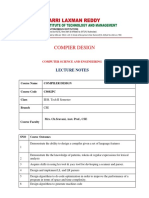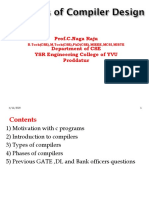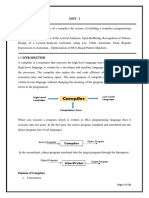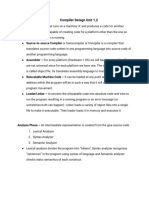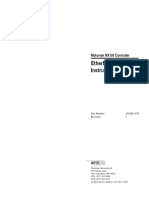0% found this document useful (0 votes)
22 views45 pagesUnit 1 Part 3 - Compiler
The document provides an overview of compiler structure, phases, and related tools, emphasizing the importance of compilers in translating high-level programming languages into machine code. It details the roles of various components such as lexical analyzers, syntax analyzers, and semantic analyzers, along with the processes of error detection and symbol table management. Additionally, it discusses the differences between compilers and interpreters, as well as the functions of preprocessors, assemblers, loaders, and linkers in the compilation process.
Uploaded by
vy6837Copyright
© © All Rights Reserved
We take content rights seriously. If you suspect this is your content, claim it here.
Available Formats
Download as PDF, TXT or read online on Scribd
0% found this document useful (0 votes)
22 views45 pagesUnit 1 Part 3 - Compiler
The document provides an overview of compiler structure, phases, and related tools, emphasizing the importance of compilers in translating high-level programming languages into machine code. It details the roles of various components such as lexical analyzers, syntax analyzers, and semantic analyzers, along with the processes of error detection and symbol table management. Additionally, it discusses the differences between compilers and interpreters, as well as the functions of preprocessors, assemblers, loaders, and linkers in the compilation process.
Uploaded by
vy6837Copyright
© © All Rights Reserved
We take content rights seriously. If you suspect this is your content, claim it here.
Available Formats
Download as PDF, TXT or read online on Scribd
/ 45



















